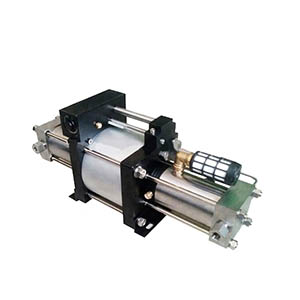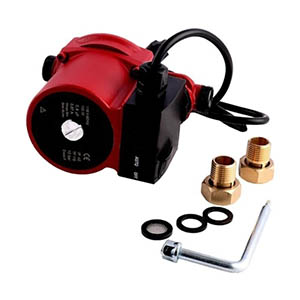How does the Booster Pump Work?
The booster pump, namely a pump used for boosting. According to the substance of action, booster pumps can generally be divided into air pressure pumps and water booster pumps.
Water booster pumps are mainly used for boosting water heaters, low water pressure in high-rise buildings, saunas, bathing, etc. And pressure boosting for insufficient water pressure on the uppermost floor of apartments, solar automatic boosting, reverse osmosis water purifiers, etc. The air booster pump is used for compressing air, liquefied nitrogen and pipeline nitrogen, water vapor.
The principle of the booster pump is to use the low air pressure of the large-area piston to generate the high hydraulic pressure of the small-area piston. Different types of booster pumps have different principles in details.
Water Booster Pump Working Principle
First fill the booster pump with liquid, then start the centrifugal pump, and the impeller rotates quickly. The blades of the impeller drive the liquid to rotate, and the liquid flows to the outer edge of the impeller by inertia when rotating, and the impeller sucks the liquid from the suction chamber at the same time. In this process, the liquid in the impeller flows around the blades, and the liquid exerts a force on the blades during the flow movement, the blades acting on the liquid with a force equal to the lift force and opposite in direction. This force does work on the liquid, making the liquid gain energy and flow out of the impeller. At this time, the kinetic energy and pressure potential energy of the liquid increase.
Air Booster Pump Working Principle
Applying a very low pressure to a large diameter air driven piston creates a high pressure when acting on a small area piston. The air pressure pump can be operated continuously via a 5/2 air-operated directional valve. The high-pressure plunger controlled by the one-way valve continuously discharges the liquid. At this time, the  outlet pressure of the booster pump is related to the air driving pressure. When the pressure between the drive section and the output liquid section reaches equilibrium, the booster pump stops and no longer consumes air. When the output pressure drops or the air-driven pressure increases, the booster pump will automatically start running until the pressure balance is reached again and then stop automatically. The pump maintains automatic reciprocation by balancing the operation of the gas distribution valve.
outlet pressure of the booster pump is related to the air driving pressure. When the pressure between the drive section and the output liquid section reaches equilibrium, the booster pump stops and no longer consumes air. When the output pressure drops or the air-driven pressure increases, the booster pump will automatically start running until the pressure balance is reached again and then stop automatically. The pump maintains automatic reciprocation by balancing the operation of the gas distribution valve.
The gas driving part of the pump body is made of aluminum alloy. According to different media the part connected to the liquid is selected from carbon steel or stainless steel. Generally, the air pressure pump has two ports of air intake and exhaust. The air pressure lower than normal pressure (that is, atmospheric pressure) at the air inlet is called "negative pressure"; the air pressure higher than normal pressure at the exhaust port is called "positive pressure". For example, the vacuum pump is a negative pressure pump, and the booster pump is a positive pressure pump. Positive pressure pumps are very different compared to negative pressure pumps such as the gas flow direction. The negative pressure pump is to suck the external air into the suction nozzle, and the positive pressure is to eject it from the exhaust nozzle.


